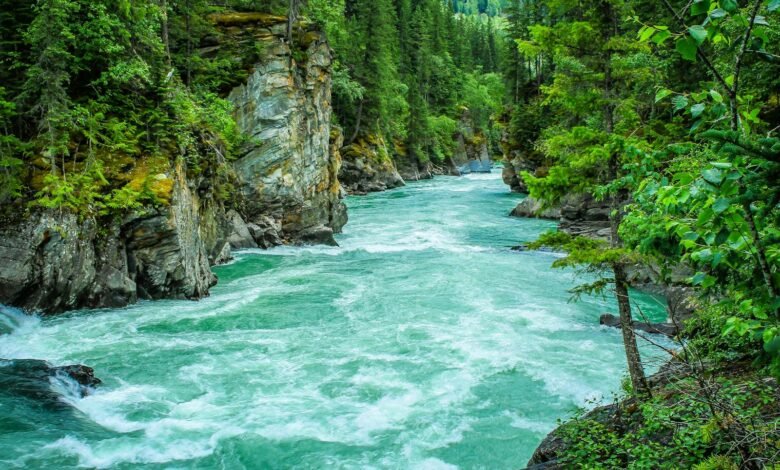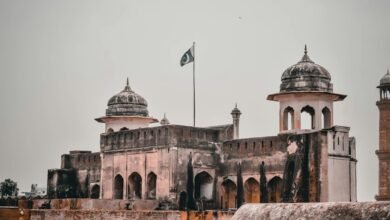
Pakistan, a country known for its diverse landscapes, is blessed with a network of rivers that not only sustain its agricultural economy but also provide scenic beauty and recreational opportunities. The rivers of Pakistan originate from various mountain ranges, including the Himalayas, Karakoram, and Hindu Kush, and flow across the country, enriching the plains and creating fertile lands. These rivers have played a vital role in shaping the civilization and culture of the region for centuries.
1. The Indus River (Sindhu Darya)
Length: 3,180 kilometers (1,976 miles)
Major Dams: Tarbela Dam, Mangla Dam
Importance: The Indus River is the longest and most significant river in Pakistan. Originating in Tibet near Mount Kailash, it flows through Ladakh in India, entering Pakistan through Gilgit-Baltistan, and traversing the entire length of the country before emptying into the Arabian Sea near Karachi. The river supports the largest canal-based irrigation system in the world, essential for wheat, rice, and cotton cultivation.
2. Jhelum River
Length: 725 kilometers (450 miles)
Key Sites: Mangla Dam
Cultural Significance: The Jhelum River, one of the five rivers of Punjab, originates from the Verinag Spring in the Kashmir Valley. It flows into Pakistan and merges with the Chenab River. Historically known as the Vitasta, it was significant during Alexander the Great’s invasion, particularly in the Battle of Hydaspes.
3. Chenab River
Length: 960 kilometers (597 miles)
Hydropower: Multiple projects underway
Historical Significance: Originating from the Himalayas, the Chenab River flows through Pakistan’s Punjab and merges with the Indus. It is rich in cultural history, featured prominently in Punjabi folklore, particularly in the famous love story of Heer Ranjha.
4. Ravi River
Length: 720 kilometers (447 miles)
Cultural Sites: Lahore
Environmental Issues: Severe pollution
The Ravi River, though smaller in comparison, holds great historical significance. It flows from the Himalayas into Pakistan, with Lahore, a historical city, located along its banks. Due to the Indus Waters Treaty, its flow has reduced significantly, but the river remains vital to the region’s culture.
5. Sutlej River
Length: 1,450 kilometers (900 miles)
Irrigation: Key role in Punjab’s agriculture
Historical Importance: The easternmost river of Punjab, the Sutlej, has a long history as a critical water source. Despite reduced flow due to upstream usage, it continues to play an important role in the region’s agriculture.
6. Kabul River
Length: 700 kilometers (435 miles)
Key Cities: Peshawar
Strategic Importance: The Kabul River, originating in the Hindu Kush mountains in Afghanistan, flows into Pakistan’s Khyber Pakhtunkhwa province. It is vital for the region’s agricultural and drinking water supplies and has long served as a trade route.
7. Swat River
Length: 240 kilometers (150 miles)
Tourism: The “Switzerland of the East”
The Swat River, flowing through the picturesque Swat Valley, is renowned for its crystal-clear waters and lush green landscapes. It offers excellent opportunities for tourism, including fishing, rafting, and sightseeing.
8. Neelam River
Length: 245 kilometers (152 miles)
Tourism: Neelam Valley
The Neelam River, also known as Kishanganga, flows through the stunning Neelam Valley in Azad Jammu and Kashmir. Its breathtaking scenery and outdoor activities, such as trekking and rafting, make it a major tourist attraction.
9. Kunhar River
Length: 166 kilometers (103 miles)
Tourism: Kaghan Valley
The Kunhar River flows through the scenic Kaghan Valley, famous for its turquoise waters. It is a popular destination for nature lovers and adventurers, offering river rafting and stunning views of northern Pakistan’s landscapes.
Conclusion
The rivers of Pakistan are a critical resource, providing water for agriculture, drinking, and energy production. They also shape the country’s geography, culture, and history. From the mighty Indus to the smaller rivers like the Neelam and Kunhar, these rivers sustain life across Pakistan’s diverse landscapes and are integral to its economy and heritage.



